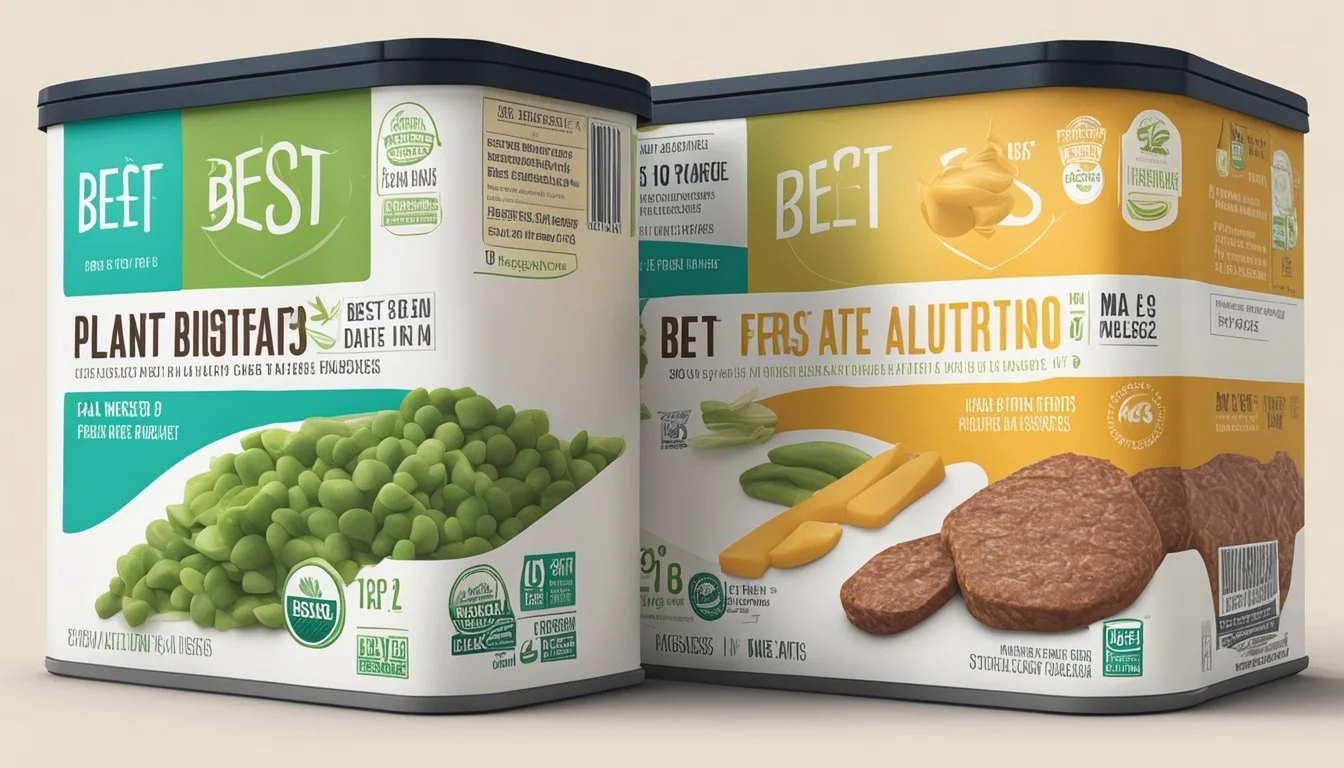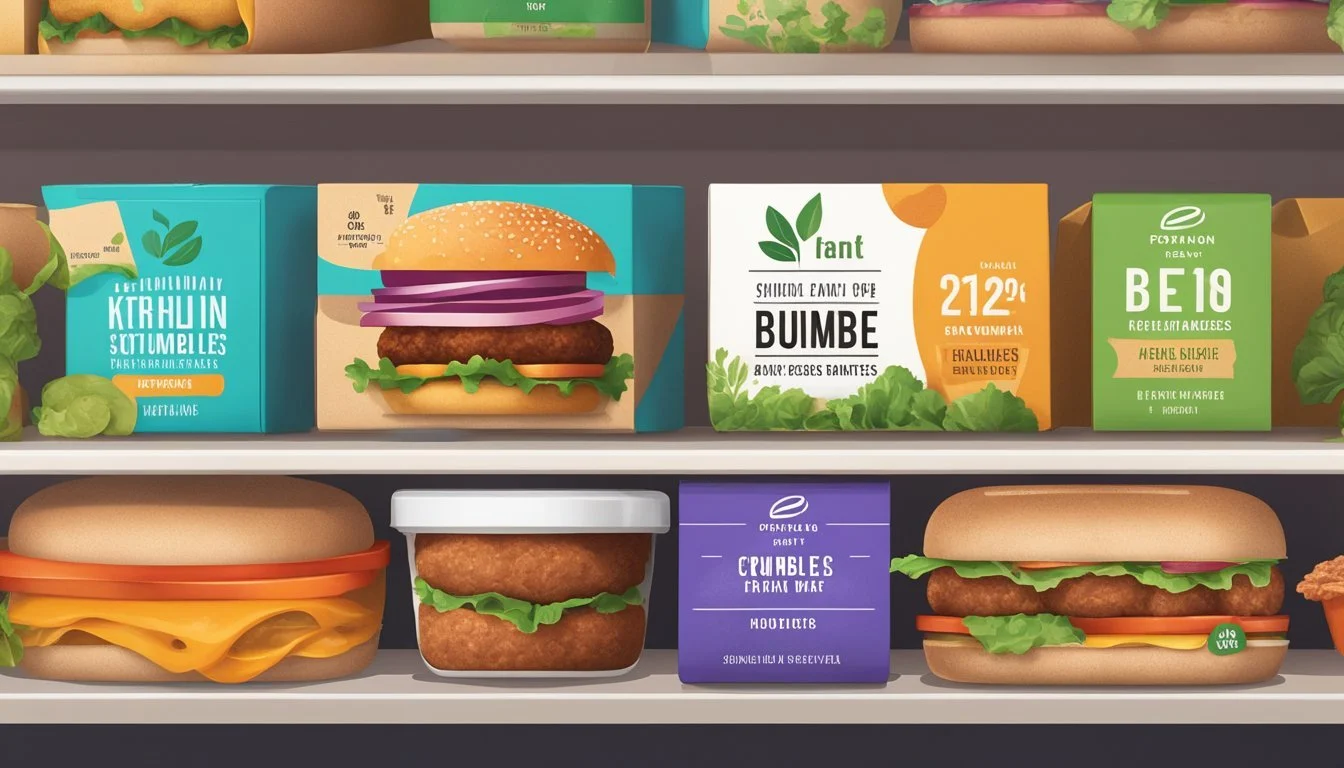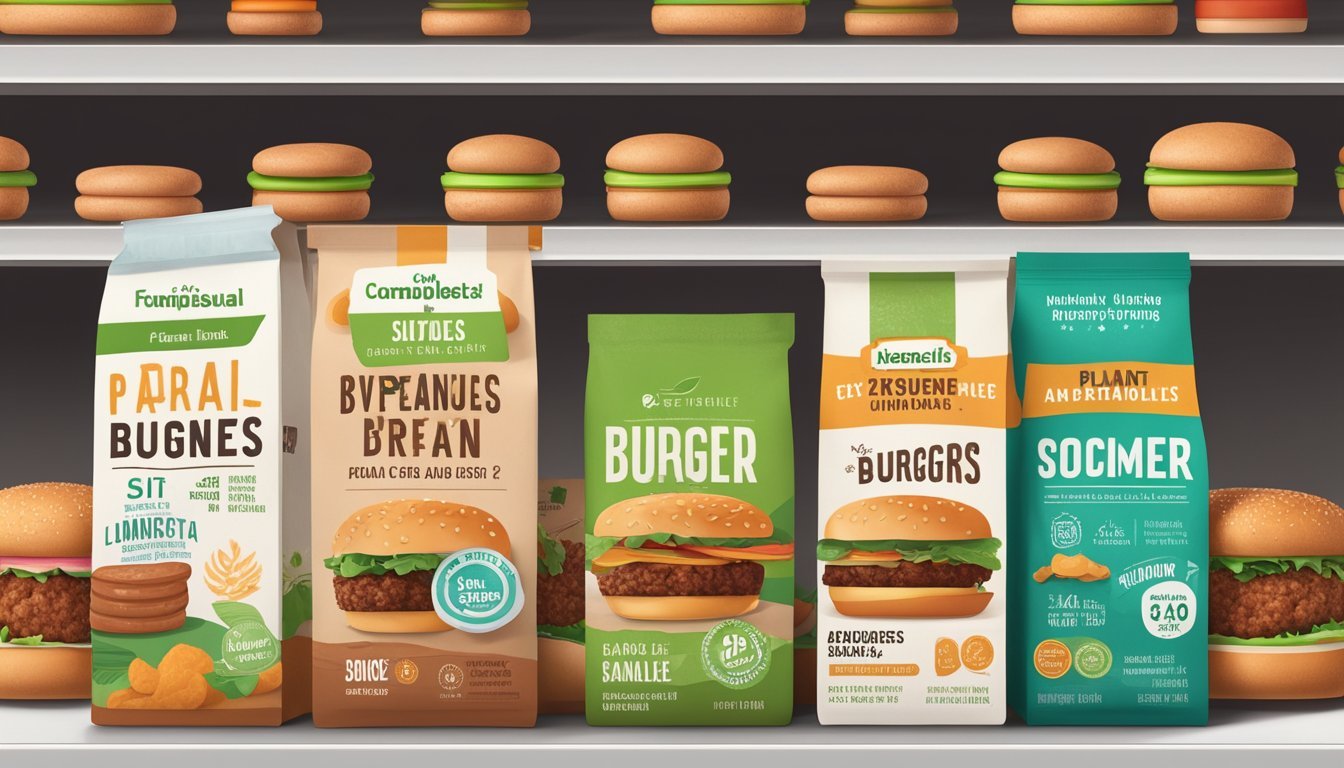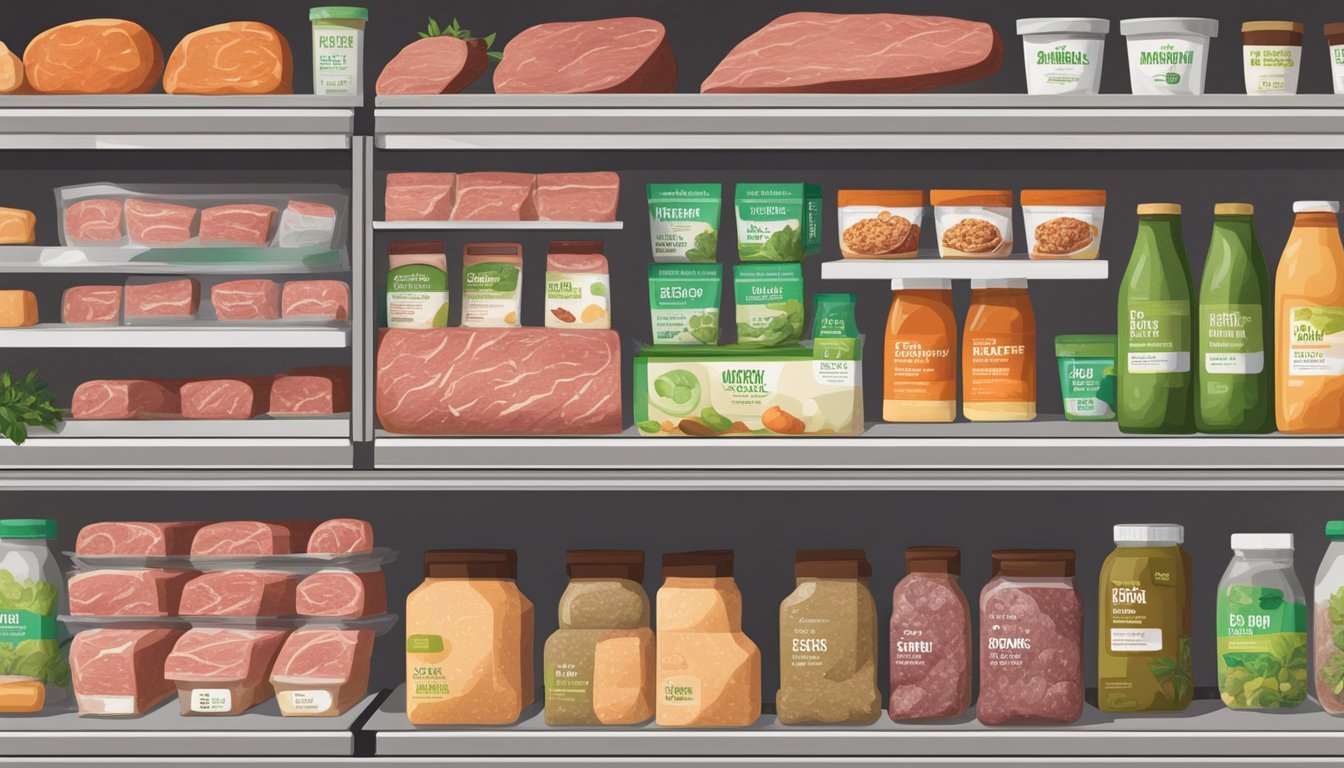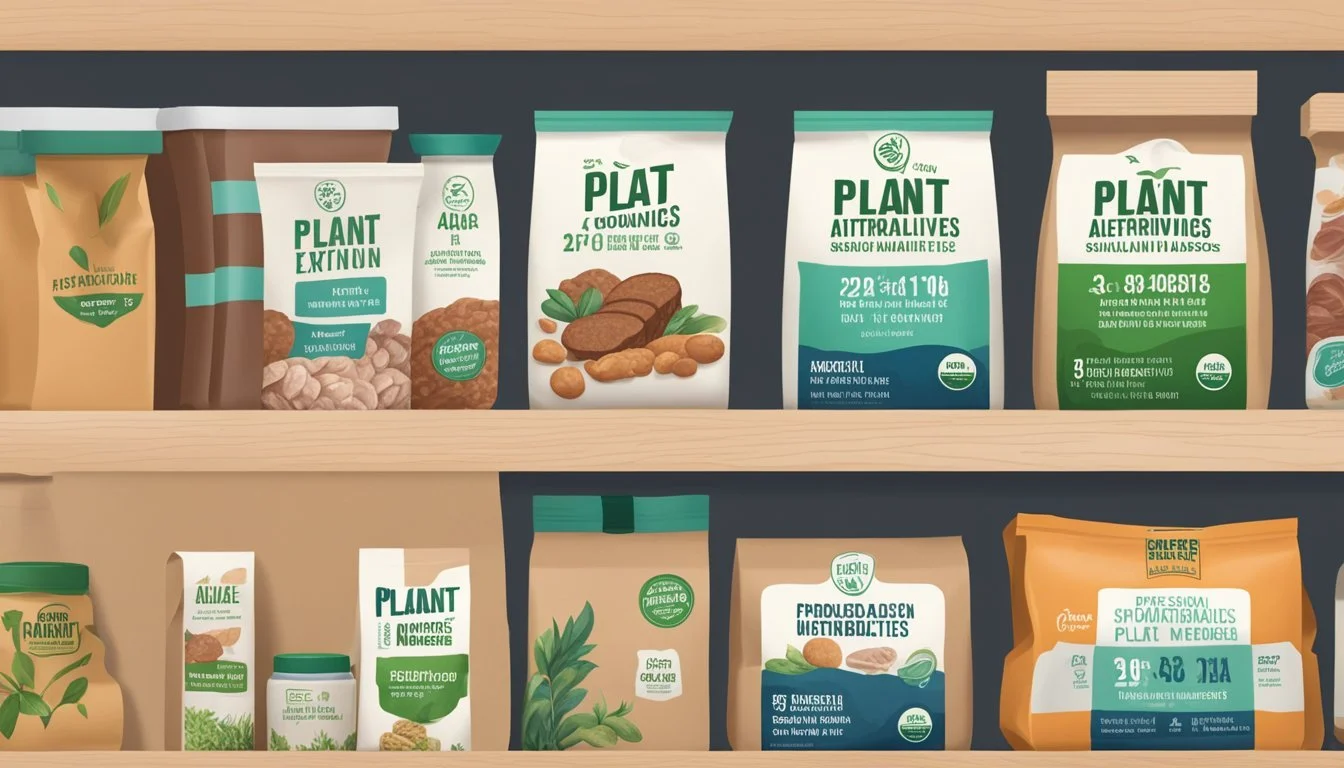How Long Does Plant-Based Meat Alternatives Last?
Shelf Life Explained
Plant-based meat alternatives have become a staple in many households, offering a sustainable and healthier option for those looking to reduce their meat consumption. These products, ranging from burgers to sausages and meatless crumbles, are designed to mimic the taste and texture of traditional meat. Understanding the shelf life of these alternatives is crucial for consumers who want to ensure they're enjoying these products at their best quality and maintaining food safety standards.
The longevity of plant-based meat alternatives in the fridge can vary. Typically, in their unopened state, these products remain fresh for about a week to 10 days. However, this duration can differ based on the brand and specific product type. It's important to note that once opened, these meat substitutes should be consumed within a few days to maintain optimal freshness and taste.
Storage plays a pivotal role in extending the shelf life of vegan meats. In a cool and dry environment, certain products can maintain their quality for extended periods, such as canned plant-based goods with a shelf life of up to six years. Proper storage involves keeping the products in the fridge within the recommended temperature range and ensuring packaging is sealed to protect against contaminants and air exposure that can accelerate spoilage.
Understanding Plant-Based Meat Alternatives
Plant-based meat alternatives are designed to replicate the taste, texture, and nutritional value of traditional meat products. They cater to vegan, vegetarian, and flexitarian diets, offering a substitute for those looking to reduce or eliminate animal-based meats from their diets.
Definition and Types
Plant-based meat alternatives refer to food products that mimic the characteristics of animal meat, such as burgers, crumbles, and sausages, but are made entirely from plant sources. The types vary from plant-based burgers to sausages and other meat-like forms, structured to imitate conventional meat at various levels of similarity.
Key Ingredients
The primary ingredients found in plant-based meats include proteins derived from soy, pea, nuts, and beans. These ingredients not only provide the necessary texture and bite but also contribute to the binding and nutritional aspects of the products. For instance:
Soy and pea protein: Commonly used for their robust texture and high protein content.
Nuts and beans: Offer additional flavors, textures, and nutritional benefits.
Nutritional Profile
The nutritional profile of plant-based meat alternatives can be comparable to their animal-based counterparts, especially in terms of protein content. They often contain essential amino acids and are designed to be lower in saturated fats. However, they may also have varying levels of added nutrients, such as:
Vitamins (particularly B12) and minerals (like iron), which are often fortified.
Fiber, a beneficial plant component not found in animal meats.
A comprehensive nutritional breakdown would typically include:
Nutrient Plant-Based Meats Note Protein High Comparable to animal meat Saturated Fat Low to Moderate Generally lower than in animal meat Fiber Present Absent in animal meat Vitamins/Minerals Often Fortified Including B12 and Iron not naturally present in plants
Health and Nutrition Considerations
When evaluating plant-based meat alternatives such as burgers, crumbles, and sausages, considering their protein content, fat and saturated fat levels, as well as the presence of vitamins and minerals is crucial for assessing their nutritional value.
Protein Content
Plant-based meat alternatives are often designed to provide adequate protein, which is essential for muscle repair and growth. They typically derive protein from sources like soy, peas, and wheat gluten. For example, a single plant-based burger can provide approximately 20 grams of protein, aligning with conventional meat options.
Fat and Saturated Fat
Fat Content: Plant-based alternatives may contain added fats to improve taste and texture. A plant-based sausage could have between 10 to 15 grams of total fat. However, the type of fat is important.
Saturated Fat: Many plant-based meats contain lower levels of saturated fat compared to their animal counterparts. For instance, plant-based burgers often have less than 5 grams of saturated fat per serving, which may contribute to a healthier diet when managed appropriately.
Vitamins and Minerals
Plant-based meats can be enriched with vitamins and minerals to closely mimic the nutrition profile of animal meats.
Iron: A vital component often fortified in plant-based meats to assist in preventing anemia.
Sodium: It's important to monitor sodium levels, with some plant-based meats having as much as 400mg per serving.
Vitamin B12 and Zinc: Both are commonly found in animal products and may be added to plant-based alternatives to ensure dietary adequacy. Fiber content is often higher in plant-based meats which benefits digestive health.
By providing a balance of these nutrients, plant-based meat alternatives can be incorporated into a diet to support health and nutrition needs.
Brand Comparisons
This section presents a detailed comparison of various plant-based meat brands with a focus on the shelf life and ingredient composition of their alternative meat products.
Popular Brands
Beyond Meat and Impossible Foods are two of the most recognized brands in the plant-based meat market, offering a range of products such as the Beyond Burger and the Impossible Burger respectively. Products from these brands typically have a refrigerated shelf life of about 10 days unopened and can last 3-5 days once opened, if kept in the fridge. Freezing can extend shelf life up to 6 months, although the texture may be affected. Lightlife and Field Roast are also well-known brands that offer plant-based sausages and burgers with similar refrigeration requirements and shelf lives.
Beyond Meat (e.g., Beyond Burger): Up to 10 days refrigerated (unopened)
Impossible Foods (e.g., Impossible Burger): Up to 10 days refrigerated (unopened)
Lightlife: Up to 10 days refrigerated (unopened)
Field Roast: Up to 10 days refrigerated (unopened)
Comparative Ingredients
When examining the ingredient composition of these brands, Beyond Burger uses pea protein as a base, while the Impossible Burger is known for using soy protein and heme, which is derived from yeast, to replicate the taste of meat. Both brands avoid GMOs and gluten to cater to a wider range of dietary needs.
Beyond Burger
Base: Pea protein
Non-GMO, Gluten-Free
Impossible Burger
Base: Soy protein, Heme
Non-GMO, Gluten-Free
Lightlife products distinguish themselves by often incorporating various types of plant proteins, such as pea and rice, in their ingredients. Field Roast utilizes vital wheat gluten as a primary ingredient, which emphasizes a different texture and taste profile catering to different consumer preferences.
Lightlife
Base: Pea protein, Rice protein
Focus on diverse plant proteins
Field Roast
Base: Vital wheat gluten
Known for unique texture
Other brands like Gardein offer a broad selection of plant-based products such as crumbles and burgers, using a combination of soy, pea, and wheat proteins to provide a satisfying taste and texture. The shelf life and storage methods for Gardein are similar to those mentioned for the other brands.
Shelf Life of Plant-Based Meats
When it comes to plant-based meats, understanding their shelf life is essential to ensure both safety and quality. Different storage conditions can significantly impact the duration these products remain fresh and suitable for consumption.
Unopened Products
Unopened plant-based meats typically have a shelf-life of up to two years when stored in a cool, dry place. The fridge extends the freshness of refrigerated items—most will last at least one week. For instance, products like the Impossible Burger are cited to last for three years if the packaging remains intact and they are kept in the correct conditions.
Storage Condition Expected Shelf Life Cool, dry place Up to 2 years Refrigeration Up to 1 week Freezer Varies by product*
*Freezer life varies; always check the packaging for specific storage instructions and expiry dates.
Opened Products
Once opened, plant-based meats should be consumed within 3-5 days, especially if stored in the fridge. After cooking, these alternatives should also be eaten within this timeframe to ensure food safety and prevent spoilage.
Fridge (after opening): 3-5 days
Frozen Products
Plant-based meats can be frozen to extend their shelf life significantly. If the product is frozen prior to the expiration date and kept consistently frozen, it can last for several months. It's critical to adhere to USDA guidelines to ensure proper freezing techniques, which help in maintaining the quality and safety of the food.
Freezer: Several months (always refer to packaging and USDA guidelines)
Safe Handling and Preparation
When preparing plant-based meat alternatives such as burgers, crumbles, and sausages, it is essential to follow safe cooking and food handling practices to prevent bacterial contamination, including potential pathogens like Salmonella.
Cooking Guidelines
Plant-based meat should be cooked to specific temperatures to ensure it is safe to eat. The FDA and USDA suggest different minimum internal temperatures:
The FDA recommends a minimum internal temperature of 135°F (57°C).
The USDA recommends 160°F (71°C) for plant-based beef products and 165°F (74°C) for plant-based poultry.
To determine if these meat alternatives are fully cooked, one should use a food thermometer. Plant-based meats do not always change color like traditional meats do when cooked, so temperature is the most reliable indicator of doneness.
Preventing Contamination
Maintaining the cleanliness of the preparation area is vital when handling plant-based meat to prevent cross-contamination. Here are some steps to ensure safe handling:
Before Cooking:
Wash hands thoroughly for at least 20 seconds with soap and water.
Use clean and separate utensils and surfaces for plant-based meats.
During Cooking:
Keep raw and cooked products separate to avoid cross-contamination.
Do not use the same utensils on cooked food that previously touched raw food without washing them.
Storage Tips:
Plant-based meat alternatives typically last unopened in the fridge for about 7 to 10 days; however, this can vary by brand, so always check the expiration date.
Once opened or cooked, store leftovers in the fridge and consume them within 2-3 days to reduce the risk of bacterial growth.
Environmental and Ethical Considerations
When considering plant-based meat alternatives, the environmental and ethical implications are central to the discussion, as they touch on the sustainable production and the welfare of animals.
Sustainability
Plant-based meat alternatives offer a more sustainable option when compared to traditional red meat from livestock, particularly cattle. The production of these alternatives typically requires fewer resources, such as water and land, and results in lower greenhouse gas emissions. For instance, the adoption of plant-based beef alternatives can contribute to a marked reduction in the food system's carbon footprint. It is a reflection of the shift from resource-intensive meat production to more efficient plant-based methods. This transition is particularly significant in light of the environmental impact tied to meat consumption, which includes the use of chemicals and a substantial amount of water that may lead to various forms of ecological degradation.
Reduced resource usage: water, land
Lower greenhouse gas emissions
Less chemical usage
Animal Welfare
The shift toward plant-based alternatives is also ethically motivated by concerns for animal welfare. The increase in plant-based meat consumption reduces the dependency on cattle and other livestock, which are traditionally raised for meat. It suggests that meat alternatives have a role to play in diminishing the number of animals subjected to farming practices, thus potentially decreasing instances of animal suffering related to the demands of mass meat production.
Lower reliance on livestock
Potential reduction in animal suffering
The conversation around plant-based meat alternatives intertwines concerns for the planet with ethical considerations for living beings, pointing towards a future where both may benefit.
Incorporating Plant-Based Meats into Your Diet
When introducing plant-based meats into one's diet, they may consider incorporating a variety of recipes and plan a gradual dietary shift to accommodate these alternatives to traditional meats.
Recipes and Meal Ideas
Switching to plant-based meats offers a creative culinary adventure. Burger King has made headlines with its plant-based burger options, inspiring home cooks to replicate similar dishes in their own kitchens. Recipes utilizing plant-based burger patties can be easily adapted to include these meat alternatives, and they can serve as a familiar starting point for those new to plant-based diets.
Burgers: Use plant-based patties on whole-grain buns with a selection of toppings.
Tacos: Crumble plant-based meat substitutes and season with taco spices.
Chili: Bulk up your favorite chili recipe by adding plant-based crumbles instead of beef.
Sausages: Plant-based sausages can be grilled and served with peppers or incorporated into breakfast dishes.
Dietary Transitions
For those accustomed to eating meat, transitioning to a plant-based diet can be more seamless when substituting plant-based meats into familiar dishes. Restaurants often offer plant-based options, making it easier for diners to try these alternatives before integrating them into home-cooked meals (how long do cooked meals last?).
Start by substituting plant-based meat for traditional meat in one meal each week.
Gradually increase the frequency of meals that include plant-based alternatives.
Explore a variety of plant-based meat products to discover personal preferences.
The Future of Plant-Based Meats
The plant-based meat industry is both dynamic and innovative, shaping consumer offerings to reflect changing tastes and environmental considerations.
Innovations and Trends
The sector is witnessing significant advancements, with companies like Impossible Foods and Beyond Meat leading the charge. They focus on enhancing the sensory experience and nutritional profiles of plant-based options. Innovations such as improving texture to mimic traditional meat more closely, and bioengineering to fortify products with vitamins and minerals, are expected to emerge. In the regulatory realm, the FDA plays a crucial role in the approval of novel ingredients, ensuring that new products are both safe for consumption and accurately labeled.
Fueling Discoveries:
Heme protein – key to Impossible Foods' meaty flavor
Mung bean protein – a newer ingredient to replicate egg textures
Enhancing Availability:
Expanded presence in grocery stores
Increased variety of products, including veggie burgers and beyond burgers
Consumer Acceptance
Acceptance hinges on two main factors: taste and perceived health benefits. Taste-wise, consumers are increasingly inclined towards plant-based meats that offer a gustatory experience akin to their animal-derived counterparts. Health-conscious shoppers are often drawn to plant-based options to potentially mitigate health risks linked to red and processed meats. Retailers are responding by offering a wider array of plant-based meats, signaling a growing acceptance and demand that encourages producers to innovate further.
Key Consumer Considerations:
Taste – Plant-based meats must closely resemble the flavor of traditional meats
Health – Consumers often seek products with nutritional enhancements
In summary, as plant-based meats continue to evolve through innovation and gain acceptance, the market appears poised for sustained growth, boosted by companies that remain on the cutting-edge of alternative protein sources.
Additional Considerations
When selecting plant-based meat alternatives, consumers should consider potential allergens and the cost and accessibility of these products besides their shelf-life.
Allergens and Intolerances
Plant-based meat alternatives may contain common allergens such as soy, gluten, nuts, and pea protein, which could provoke reactions in sensitive individuals. It is crucial for consumers with food allergies or intolerances to thoroughly check ingredient labels. For instance, soy and wheat are often used as protein bases, while nuts like almonds may be present in some products.
Gluten: Found in products using wheat-based ingredients.
Eggs & Dairy: Rare in plant-based meats, but possible in vegetarian options.
Nuts: Used in some recipes for texture and protein.
Soy: Common as a protein source and binder in various forms.
Pea Protein: Popular for its meat-like texture and high protein content.
Additionally, ingredients like coconut oil are widespread for their fatty, satisfying qualities but may also impact those with specific sensitivities or intolerances.
Cost and Accessibility
The price of plant-based meat alternatives can vary greatly, potentially impacting accessibility for consumers. Prices are often higher than conventional meat products due to factors like production costs and the use of specialized ingredients. While a Tofurky sausage might be a cost-effective option, other plant-based meats may come at a premium.
Type of Alternative Average Cost (Per Pound) Tofurky sausage $5.13 Boneless chicken $4.19 - $4.49 Plant-based burger Can be more expensive
Accessibility is another concern; consumers may find a greater variety of these products in urban areas and specialty stores than in rural or less affluent regions. Availability also extends to the choice of specific types such as burger patties, sausages, or crumbles and whether they are free from allergens like gluten or soy.

